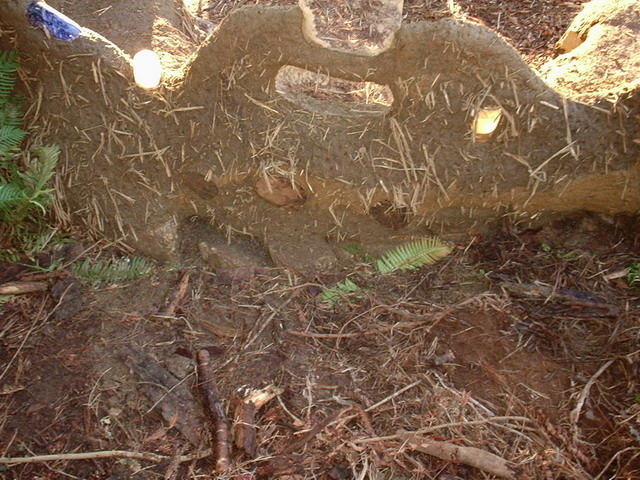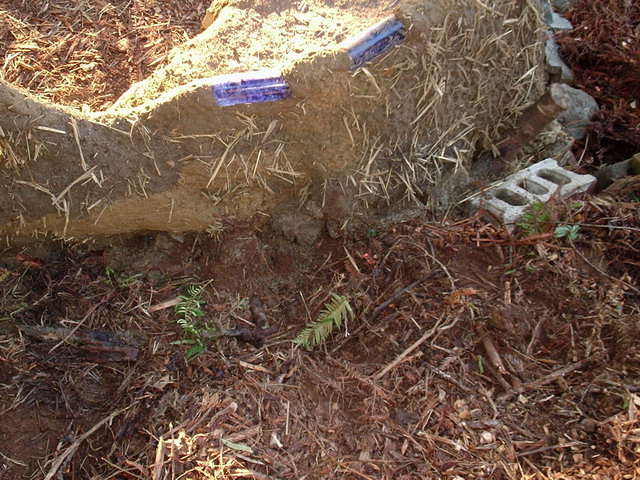The
Making
of a 
![]()
![]()

Cob structures can be incredibly strong and durable. For example, many cob structures that were built in England in the 1400 and 1500's are still standing today, very much intact. This strength and integrity is owed to the materials that make up the cob. Each material has its own special property that it adds to the strength of the cob. Below you can read about how.
Clay- has adhesive properties and helps to bind the
different materials together.
Sand- adds structural and compressive strength.
Straw- has cohesive properties and adds to the tensile
strength.
What happens when you have too much or too little of the materials?
Too little sand- the cob will crack easily.
Too little clay- the cob will be crumbly and is hard to work
with.
Too little straw- the cob will be structurally vulnerable and
break easily.
Too little water- the cob won't easily stick together, harder to
work with.
Too much sand- the cob will be crumbly and hard to work with.
Too much clay- leads to shrinking and cracking.
Too much straw- the cob becomes crumbly and hard to work
with.
Too much water- the cob won't be able to keep it's shape or
support its weight. This can lead to bulging
at the sides, called ooging.
A Note About Moisture
The cob bench has given many people the opportunity to work with cob construction and the chance to have their own artistic input. However, with many different people having worked on the bench, once and awhile a mistake might be made. This was the case with the back of the bench. During my work, I realized that the back part of the bench had been built all the way past the rock foundation and was touching the earth below it. While the cob was applied strongly, the cob having such intimate contact with the moist ground could cause structural problems in the future. It is true that cob can deal with moist conditions quite well, but only if it has adequate time to dry out. This is because the cob "breathes;" it allows moisture in and out of itself. However, a constant exposure to the moist earth would make it very difficult for the cob to dry out. Water would slowly begin to rot the straw and make the cob weak and vulnerable. Therefore, I had to dig out much of the cob backing. Below you can see pictures of this. The red lines indicate where cob used to be and was dug out. Some of the cob that was dug out was remade into cob balls and used on other parts of the bench. Despite this little set back, it was a learning experience. As the old English saying goes,
"give the cob a good pair of boots and a hat and she'll do fine."




![]()